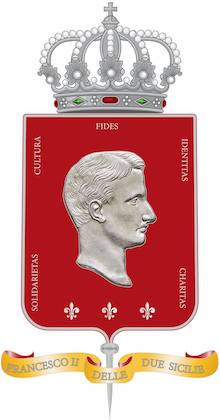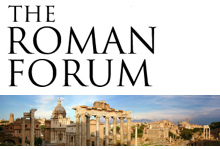“The problem we must solve is this: to help the revolution, but make it appear before Europe as a spontaneous act.” ~ Camillo Benso, Count of Cavour [1]
Enrico Fagnano’s Il nostro sangue venduto (Our Blood Sold) is a thorough and relentless exposé of betrayal, built not on speculation but on diaries, letters, and government records, including many authored by the very men who orchestrated the dismantling of the Kingdom of the Two Sicilies. Unearthing uncomfortable truths from both Neapolitan and Piedmontese archives, Fagnano names names and cites sources. Admirals, generals, and even royal advisors emerge as compromised figures, not through sweeping claims but through their own words and their own accounts. The weight of evidence is both sobering and devastating.
“No one esteems and appreciates Garibaldi’s character and certain qualities more than I do; but when an army of 60,000 men is defeated, a kingdom of six million conquered, with the loss of eight men [the figures are obviously and intentionally fanciful], one should think that something unusual is going on—something not found everywhere—and not believe oneself therefore master of the globe.”[2]
Having done his homework, Fagnano does not call for blind loyalty to the Southern cause; he insists that history stop ignoring what actually happened. He presents a pattern of military betrayal, political bribery, and calculated surrender that extends beyond the battlefield and deep into the bureaucratic machinery of the new Italian state. “Numerous are the traces of the money that literally flowed in rivers,” he writes, “to buy over the subjects of the Bourbons and bring them to the side of the invaders.” This financial corruption (and moral bankruptcy), meticulously documented through archival evidence, becomes one of the central pillars of Fagnano’s indictment.
“Garibaldi’s exploits in the Two Sicilies have seemed so strange that his admirers have called them prodigious. A handful of young men led by a daring man defeats armies, takes cities by storm in a matter of weeks, seizes a kingdom of nine million inhabitants—and all this without ships and without weapons: never mind veni, vidi, vici! No Caesar compares to Garibaldi. And yet the miracles weren’t performed by him, but by the great General Nunziante and the other army officers who, to the eternal shame of the Neapolitan army, deserted their flag to rally under the enemy’s.” [3]
Despite the provocative title, the work does not wallow in self-pity or regional victimhood. It is a call for historical accountability, directed just as much at the South itself as at those who wronged it.
“If in the events of Sicily and Calabria Garibaldi at times saw the Neapolitan phalanx retreat before him, he never imagined this was due to any magical force attributed to him, nor the much-celebrated valor of the Thousand of Marsala. He saw and knew full well that it was the effect of the gold he lavished on a few army chiefs—shame of humanity—who, like modern Iscariots, for a handful of gold, sold the lives, blood, and honor of thousands of soldiers blindly entrusted to them.” [4]
Garibaldi, the so-called “Hero of Two Worlds,” knew he didn’t need military brilliance when betrayal had already cleared his path.
"He knew perfectly well that a thousand cannot defeat a hundred thousand, just as one cannot defeat a hundred.” [5]
For readers unfamiliar with what some have called the “other Risorgimento,” this text is an honest and unflinching introduction. For those already involved in these debates, it is a significant contribution. And for anyone who believes history should be faced honestly, with all its ugly facts included, Fagnano’s work is not just valuable—it is essential.
~ By Giovanni di Napoli, July 29th, Feast of San Lupo di Troyes
* Translations are my own.
Notes
[1] Camillo Benso, Count of Cavour, in a letter sent on August 9, 1860 to Admiral Persano, recorded in the Private Diary.
[2] Massimo D’Azeglio, in a letter written to jurist Michelangelo Castelli (September 17th), later published in his Political Correspondence, edited by Luigi Chiaia, Roux, 1891).
[3] The Believed Miracle of Garibaldi, published anonymously on September 13, 1860, in the Turin newspaper Piemonte.
[4] Luigi Gaeta, in his military memoir, Nine Months in Messina (Luongo Press, 1862).
[5] Ibid.
The books by Enrico Fagnano, Gli Anni Impossibili, Il piemontesismo e la burocrazia in Italia dopo l’Unità, and La storia dell’Unità d’Italia are available at the Bottega2Sicilie website.






























